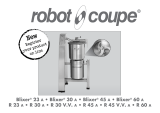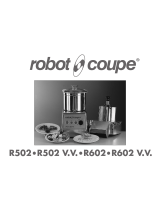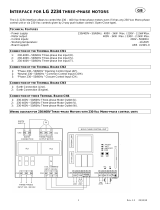
30
Level 3:
If you have not been using your machine intensively,
when it may be quite normal for the motor to overheat
and trigger the thermal relay and/or overload
protector:
- If the test indicates that the thermal relay is faulty,
check that the latter is correctly set (automatic
position and current intensity in accordance with
the diagram);
- If the test indicates that the motor overload
protector is faulty, check the latter’s wiring;
- If a «voltage» or «Phase + Frequ» error message
is displayed, check that the machine is supplied
with the correct voltage. Also check that the plug
is correctly wired.
- If a «Jumpers + KFR» error message is displayed,
check that the location of the configuration jumpers
on the board corresponds to that indicated in
the electrical diagram, according to the mains
supply.
* If the latter problems persist, the control board must
be changed.
• VARIABLE SPEED VERSION
The flashing of the green light indicates which element
needs to be checked.
A rapidly flashing light indicates that either the base
(ISBC) or the lid (ISCO) presence sensor is posing a
problem. Press button I to determine which of these
two components needs to be checked. If the light
continues to flash the same way as before when you
press button I, check the lid arm sensor.
If, on the other hand, the light starts to flash more
slowly and asymmetrically (longer off than on), check
the lid sensor.
Asymmetrical flashing (longer on than off) means
that the bowl sensor needs to be checked (ISCU).
Slow flashing means that either the contact of the
STOP button (BPA) or the motor protector (PTO) is
posing a problem. Press button T to determine which
of these two components needs to be checked. If the
flashing does not change when you press button T,
check the contact of the STOP button.
If, on the other hand, the flashing becomes
asymmetrical (longer on than off), check the motor
overload protector.
For further details about the tests, see the previous
paragraph on dual-speed models.
• Test sequence:
When the green light flashes, start by pressing button
I to test that it is working properly (as the buttons are
used to test the machine, it is only logical to check
that they themselves are working properly).
Press buttons II and T to test that they are working,
too.
At this level, button 0 does not test anything.
Press buttons I and II simultaneously to move up to
testing level 2, indicated by more rapid flashing of
the indicator light. At level 2, buttons I, II, T and
0 allow you to test the presence sensors of the lid,
the base and the bowl, and the contact of button 0,
respectively.
Press buttons I and II simultaneously to move up to
testing level 3, indicated by very rapid flashing of the
indicator light. At level 3, buttons I, II, T and 0 allow
you to test the thermal relay and the motor overload
protector, the mains voltage, the phase-frequency
detector, and the location of the jumpers and braking
relay, respectively.
Press buttons I and II simultaneously to return to
the normal flashing speed and therefore to testing
level 1.
• Checks
Level 1 and level 2 button 0 test:
If one of the button tests indicates a problem, check
the button’s contact block and wiring.
Level 2:
If the test reveals a problem with one of the presence
sensors, check that the removable parts of your
cutter mixer (bowl, lid and arm) are all in place.
If the problem persists, check the presence sensors
themselves and their wiring.

































